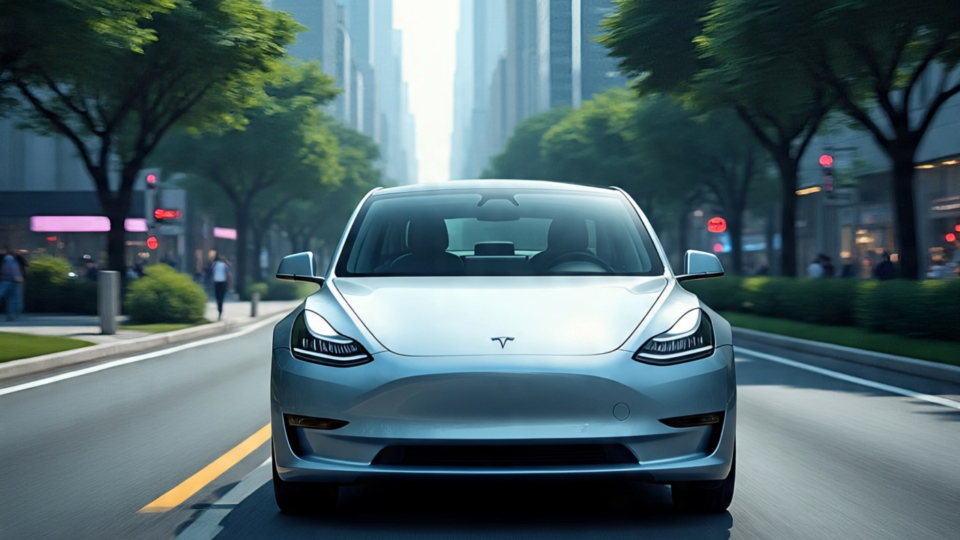
Tesla’s Self-Driving AI: Progress & Challenges 🚗
Imagine a car that drives itself, navigating complex city streets, highway interchanges, and even tricky parking spots, all while you relax or focus on other tasks. For years, this has been the promise of autonomous vehicles, and at the forefront of this ambitious endeavor is Tesla’s Self-Driving AI. With its bold vision and unique approach, Tesla has continually pushed the boundaries of what’s possible, but its journey has been marked by both remarkable progress and significant challenges.
Introduction: The Road to Autonomy with Tesla FSD 🛣️
Tesla’s pursuit of full self-driving capabilities has captivated the world, sparking intense debate and pushing the boundaries of artificial intelligence in real-world applications. The company’s Full Self-Driving (FSD) software, particularly its “FSD Beta” and now “FSD (Supervised)” iterations, aims to transform how we interact with our vehicles, moving beyond mere driver assistance to genuine autonomy. This article delves into the fascinating journey of Tesla’s Self-Driving AI, examining the strides it has made, the innovative technology powering it, and the considerable hurdles it still faces on the path to widespread, unsupervised self-driving.
Background or Context: Understanding Tesla’s Vision-Only Approach
At its core, Tesla’s Self-Driving AI is built on a “vision-only” philosophy. Unlike many competitors that rely on a suite of sensors including LiDAR (light detection and ranging) and radar, Tesla’s system primarily uses cameras to perceive the world, much like human drivers do. This approach, championed by CEO Elon Musk, posits that if humans can drive safely with just their eyes, then a sophisticated AI, trained on vast amounts of real-world video data, can do the same.
Tesla vehicles come equipped with a suite of cameras providing a 360-degree view around the car. This raw camera data is fed into a powerful neural network, which then processes it to understand the driving environment: identifying other vehicles, pedestrians, traffic lights, road signs, lane markings, and obstacles. The company’s large fleet of vehicles constantly collects driving data, which is then used to train and improve the AI models in a process known as “fleet learning.” This iterative approach allows Tesla to rapidly update its software over-the-air (OTA), pushing improvements directly to customer vehicles.
It’s crucial to understand the SAE Levels of Driving Automation to properly categorize Tesla’s current offerings:
- Level 0 (No Automation): Human driver performs all tasks.
- Level 1 (Driver Assistance): Vehicle assists with either steering OR acceleration/braking (e.g., adaptive cruise control).
- Level 2 (Partial Driving Automation): Vehicle assists with both steering AND acceleration/braking (e.g., Tesla Autopilot, FSD (Supervised)). The driver must remain engaged and ready to take over.
- Level 3 (Conditional Driving Automation): Vehicle can drive itself under specific conditions, but the human driver must be ready to intervene when prompted.
- Level 4 (High Driving Automation): Vehicle can drive itself fully within a defined operational design domain (ODD) without human intervention. The driver can disengage.
- Level 5 (Full Driving Automation): Vehicle can drive itself under all conditions, everywhere, all the time, with no human driver needed.
Currently, Tesla’s Full Self-Driving (Supervised) system is classified as SAE Level 2. Despite its name, it requires constant driver supervision and intervention. Tesla’s long-term goal is to achieve Level 5 autonomy, a target that has proven more challenging and time-consuming than initially projected.
Detailed Comparison: Tesla FSD vs. the Competition
Tesla’s vision-only approach stands in contrast to many of its competitors in the autonomous vehicle space. Here’s a quick comparison with some key players:
| Feature/Company | Tesla FSD (Supervised) | Waymo | Cruise |
| Primary Sensor Suite | Cameras (vision-only) | LiDAR, Radar, Cameras | LiDAR, Radar, Cameras |
| Current Autonomy Level | SAE Level 2 (Driver Supervised) | SAE Level 4 (High Automation) | SAE Level 4 (High Automation) |
| Operational Model | Consumer-owned vehicles; software updates via OTA. | Robotaxi service in geofenced areas. | Robotaxi service in geofenced areas. |
| Deployment Scale | Millions of consumer vehicles globally (FSD Beta/Supervised to hundreds of thousands in North America). | Limited to specific cities (Phoenix, San Francisco, LA, Austin). | Limited to specific cities (San Francisco, Phoenix, Austin). |
| Data Collection | Massive real-world fleet data from consumer vehicles. | Dedicated robotaxi fleet data + extensive simulation. | Dedicated robotaxi fleet data + extensive simulation. |
| Approach Philosophy | AI learns to “see” and react like a human, highly scalable. | Safety-first, highly redundant sensors, precise mapping for controlled environments. | Urban specialist, similar sensor suite to Waymo, focused on dense city driving. |
| Human Intervention | Required at all times; driver must remain attentive. | No human intervention required within ODD; remote operators for edge cases. | No human intervention required within ODD; remote operators for edge cases. |
The key takeaway is that Waymo and Cruise are operating fully autonomous (Level 4) services in limited, pre-mapped areas, while Tesla is deploying a driver-assist system (Level 2) to a much larger fleet globally, with the ambition of scaling to full autonomy everywhere.
Key Features / Benefits of Tesla’s Self-Driving AI
Tesla’s Self-Driving AI offers a suite of impressive features, even in its current supervised state:
- Traffic-Aware Cruise Control: Maintains a set speed and distance from the vehicle ahead.
- Autosteer: Steers the vehicle within a clearly marked lane.
- Navigate on Autopilot: Actively guides the vehicle from highway on-ramp to off-ramp, including suggesting lane changes, navigating interchanges, and taking the correct exit.
- Auto Lane Change: Assists in moving to an adjacent lane on the highway when Autosteer is engaged.
- Autopark: Automatically parallel or perpendicular parks the vehicle.
- Summon / Smart Summon: Moves the vehicle in and out of tight spaces, or allows it to navigate more complex environments to come find you in a parking lot.
- Traffic Light and Stop Sign Control: Identifies stop signs and traffic lights and automatically slows the vehicle to a stop.
- Autosteer on City Streets (FSD Supervised): The most advanced feature, enabling the car to attempt to navigate city streets, make turns, and handle intersections with minimal driver intervention, but always requiring active supervision.
The potential benefits of a truly autonomous Tesla’s Self-Driving AI are transformative:
- Enhanced Safety: Theoretically, AI drivers could eliminate human error, which accounts for the vast majority of accidents.
- Increased Efficiency: Optimized routes, smoother driving, and reduced traffic congestion.
- Time Savings: Commuters could reclaim hours spent driving for work, leisure, or rest.
- Accessibility: Mobility for individuals unable to drive due to age, disability, or other factors.
- Cost Reduction: Lower insurance premiums (potentially), reduced fuel/energy consumption, and eventually, the possibility of robotaxi services that are cheaper than human-driven taxis.
Pros and Cons of Tesla’s Self-Driving AI
The unique approach of Tesla’s Self-Driving AI comes with distinct advantages and disadvantages.
Pros:
- Massive Data Collection: With millions of vehicles on the road, Tesla collects an unparalleled volume of real-world driving data, which is crucial for training robust AI models. This “data flywheel” is a significant competitive advantage.
- Rapid Iteration and Over-the-Air Updates: Tesla can quickly deploy software updates and improvements to its entire fleet, allowing for rapid learning and adaptation based on real-world performance.
- Vision-Only Scalability: If successful, a vision-only system would be significantly cheaper to deploy at scale than systems relying on expensive LiDAR and high-definition mapping, making it more accessible for personal vehicle ownership globally.
- Integrated Hardware and Software: Tesla designs its own AI chips (FSD Chip, Dojo) and integrates them tightly with its software, allowing for optimized performance and efficiency.
- Continuous Improvement: The system is designed to learn and improve over time, theoretically getting better with every mile driven by the fleet.
Cons:
- Safety Concerns and Regulatory Scrutiny: The “beta” nature of FSD (Supervised) and incidents involving the system have led to significant public and regulatory scrutiny, including investigations by NHTSA and recalls. The branding “Full Self-Driving” has also been criticized for potentially misleading consumers about its current capabilities.
- Reliance on Human Supervision: Despite its advanced features, FSD (Supervised) is still a Level 2 system, meaning the driver must remain fully attentive and ready to intervene at all times. This can lead to driver complacency and misuse.
- Vision-Only Limitations: Critics argue that relying solely on cameras makes the system vulnerable to challenging conditions like heavy rain, snow, fog, or direct sunlight, and lacks the redundancy of LiDAR/radar for precise depth perception and object detection.
- “Edge Cases” Difficulty: Real-world driving presents an infinite number of unpredictable “edge cases” (unusual scenarios) that are incredibly difficult for AI to handle reliably without human-level common sense.
- Public Perception and Trust: High-profile incidents and ongoing debates about the system’s safety can erode public trust, which is vital for widespread adoption of autonomous technology.
- Legal and Liability Issues: Determining liability in accidents involving advanced driver-assist systems is complex and an evolving area of law.
Use Cases / Who Should Use It
Currently, Tesla’s Self-Driving AI (FSD Supervised) is primarily for:
- Early Adopters and Tech Enthusiasts: Individuals who are keen to experience cutting-edge automotive technology and are comfortable with actively supervising a developing autonomous system.
- Long-Distance Commuters (on highways): Autopilot and Navigate on Autopilot can significantly reduce driver fatigue on long, monotonous highway stretches.
- Drivers in Congested Traffic: Traffic-Aware Cruise Control and Autosteer can alleviate the stress of stop-and-go traffic.
In a future where Tesla’s Self-Driving AI achieves higher levels of autonomy (Level 4 or 5), the use cases would expand dramatically:
- Robotaxi Services: Tesla envisions a network of fully autonomous robotaxis, offering on-demand transportation that could be cheaper and more convenient than traditional taxis or ride-sharing.
- Personalized Mobility: Vehicles could pick up and drop off individuals without a driver, providing unprecedented freedom for non-drivers.
- Logistics and Delivery: Autonomous Teslas could be used for last-mile delivery services, optimizing routes and reducing labor costs.
- Elderly and Disabled Individuals: Full autonomy would provide independent mobility for those who cannot drive themselves.
FAQs about Tesla’s Self-Driving AI
Q1: Is Tesla’s Full Self-Driving (FSD) truly “full self-driving” yet?
A1: No. Despite its name, Tesla’s Full Self-Driving (Supervised) is currently classified as an SAE Level 2 driver-assist system. It requires constant human supervision, and the driver must remain attentive and ready to take control at all times. It is not fully autonomous.
Q2: How does Tesla’s self-driving technology differ from Waymo or Cruise?
A2: The primary difference is Tesla’s vision-only approach, relying solely on cameras, whereas Waymo and Cruise use a combination of LiDAR, radar, and cameras for redundancy and precise 3D mapping. Waymo and Cruise also operate fully autonomous (SAE Level 4) robotaxi services in geofenced areas, while Tesla’s system is a Level 2 driver assist for private vehicle owners.
Q3: What are the main safety concerns regarding Tesla’s FSD?
A3: Concerns include the potential for driver complacency due to the system’s advanced capabilities, the system’s occasional unpredictable behavior (especially in “beta” versions), and limitations of the vision-only approach in adverse weather conditions or complex “edge cases.” Regulatory bodies are actively investigating incidents involving FSD.
Q4: Does Tesla’s FSD use LiDAR or radar?
A4: Tesla has largely moved away from radar and does not use LiDAR for its FSD system, relying almost exclusively on cameras (vision-only). This is a key differentiator from most other autonomous vehicle developers.
Q5: How often does Tesla update its self-driving software?
A5: Tesla frequently updates its FSD software over-the-air (OTA), often every few weeks or months, especially for its FSD (Supervised) program participants. These updates include bug fixes, performance improvements, and new features based on data collected from its vast fleet.
Q6: What is “Dojo” and how does it relate to Tesla’s FSD?
A6: Dojo is Tesla’s custom-built supercomputer designed specifically for training its AI models for self-driving. It’s meant to process the massive amounts of video data collected from Tesla vehicles more efficiently, accelerating the development and improvement of the FSD AI.
Conclusion: A Journey of Innovation and Oversight
Tesla’s Self-Driving AI represents one of the most ambitious and closely watched technological endeavors of our time. Its progress, particularly in developing a vision-centric AI capable of navigating complex real-world scenarios, is undeniable. The continuous over-the-air updates and the sheer volume of data collected from its global fleet provide a unique advantage in the race for autonomy.
However, the journey is far from over. The challenges of achieving true Level 4 or Level 5 autonomy, ensuring absolute safety, and navigating regulatory complexities remain significant. The ongoing need for active driver supervision highlights that while Tesla’s AI is incredibly advanced, it is still a sophisticated driver-assistance system, not a fully autonomous driver.
Final Verdict: A Supervised Future, For Now 🚦
Tesla’s Self-Driving AI is a testament to groundbreaking engineering and a bold vision for the future of transportation. While it continues to push the boundaries of what a camera-only system can achieve, it operates in a “supervised” capacity for a reason. The path to truly autonomous vehicles is fraught with technical, ethical, and regulatory hurdles that require meticulous development and rigorous testing. For now, Tesla owners with FSD are participants in a grand, evolving experiment, experiencing the cutting edge of driver assistance while eagerly awaiting the day their cars can truly drive themselves, safely and reliably, without human hands on the wheel.
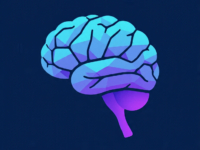











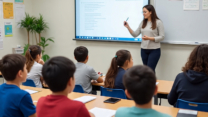
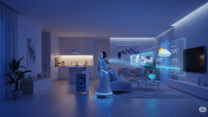

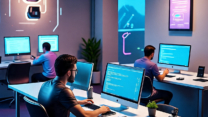



Leave a Reply